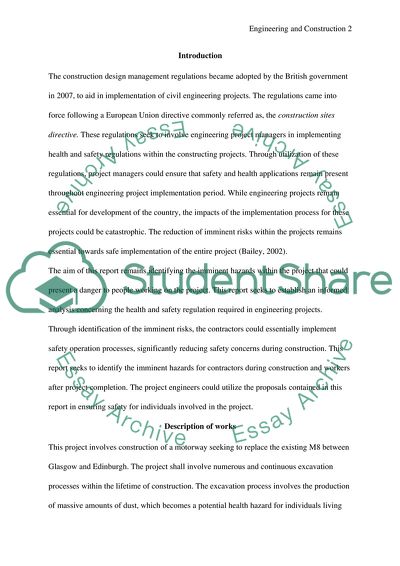Cite this document
(The Design and Construction of Motorway Project Required Bulk Coursework Example | Topics and Well Written Essays - 1500 words, n.d.)
The Design and Construction of Motorway Project Required Bulk Coursework Example | Topics and Well Written Essays - 1500 words. https://studentshare.org/engineering-and-construction/1768454-assume-that-you-are-a-cdm-coordinator-involved-with-the-design-and-construction-of-motorway-project-which-will-require-bulk-continuous-excavation-such-as-outlined-in-the-scraper-exercise
The Design and Construction of Motorway Project Required Bulk Coursework Example | Topics and Well Written Essays - 1500 words. https://studentshare.org/engineering-and-construction/1768454-assume-that-you-are-a-cdm-coordinator-involved-with-the-design-and-construction-of-motorway-project-which-will-require-bulk-continuous-excavation-such-as-outlined-in-the-scraper-exercise
(The Design and Construction of Motorway Project Required Bulk Coursework Example | Topics and Well Written Essays - 1500 Words)
The Design and Construction of Motorway Project Required Bulk Coursework Example | Topics and Well Written Essays - 1500 Words. https://studentshare.org/engineering-and-construction/1768454-assume-that-you-are-a-cdm-coordinator-involved-with-the-design-and-construction-of-motorway-project-which-will-require-bulk-continuous-excavation-such-as-outlined-in-the-scraper-exercise.
The Design and Construction of Motorway Project Required Bulk Coursework Example | Topics and Well Written Essays - 1500 Words. https://studentshare.org/engineering-and-construction/1768454-assume-that-you-are-a-cdm-coordinator-involved-with-the-design-and-construction-of-motorway-project-which-will-require-bulk-continuous-excavation-such-as-outlined-in-the-scraper-exercise.
“The Design and Construction of Motorway Project Required Bulk Coursework Example | Topics and Well Written Essays - 1500 Words”. https://studentshare.org/engineering-and-construction/1768454-assume-that-you-are-a-cdm-coordinator-involved-with-the-design-and-construction-of-motorway-project-which-will-require-bulk-continuous-excavation-such-as-outlined-in-the-scraper-exercise.


